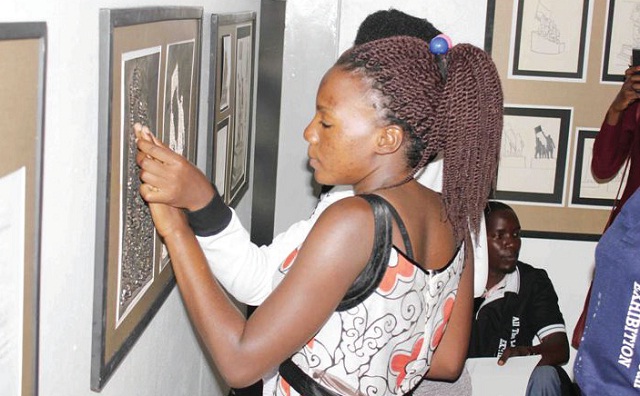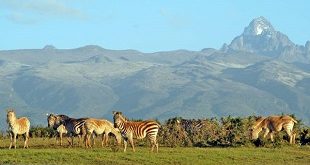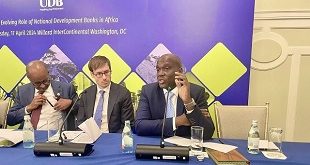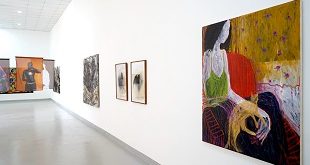
An art exhibition for the blind
Kampala, Uganda | Dominic Muwanguzi | Public monuments in Kampala are only accessible to the privileged. This statement gains even more power when you visit the exhibit of artworks that are designed for the blind at the Makerere Art Gallery.
The art on show is of public monuments illustrated on braille- a non-visual form of writing specific to the blind- and other tactile materials, to enable the blind have access to these sculptures.
It is a form of inclusion of PWDs (people with Disability) into art thereby departing from the norm that art is visual or is only a preserve for the physically abled.
It is a campaign that engages on the subject of human rights as prescribed in the United Nations Human Rights Charter and the Convention on Rights of Persons with Disability that was ratified in Uganda in September 2008.
The unique initiative is made possible by the creative ingenuity of artists like Dr. Angello Kakande; whose brainchild it is, Simon Banga illustrator of the artwork, Mukwaya Ernest and Ssentamu Ludovic both students from the Department of Architecture and Urban Planning, Makerere University.
The group collaborates to provide the public with a collection of text (in braille), illustrations in mixed media (braille, thread, stylofoam and egg shells) and sketchy maps illustrating artistic impressions of monumental sites being made accessible to the blind.
The technique of employing tactile material like stylofoam and Perkins Brailler on Braille Paper suggests the artist’s intent to make his drawings open to PWDs.
Nevertheless, the artist is conscious to include regular illustrations in ink and acrylics in his display for purpose of not rendering the physically abled public disabled.
On the other hand, Banga’s approach to produce art in different media suggests the various stages of blindness. This diversity is crucial since loss of sight sometimes does not occur all at once but happens in phases. Such critical showcase is evident of the research processes undertaken by the artists to present sincere artworks that do not only objectively deal with the subject of disability, but create awareness on the intricate details of this disorder.
Nonetheless the void in art appreciation is demonstrated in public monument sites like the Independence Monument, Centenary Monument, The Stride and The Journey Monuments that are sculpted with a bias to the normal bodied individual.
For the physically handicapped, such venues are inaccessible and this inadvertently leads to issues of isolation.
Not-withstanding the evident absence of ramps at the Makerere art gallery for some PWDs to access the space; the exhibit provides unprecedented resolve and awareness to cement the relationship between PWDs and art. As we wait for the Makerere art school to graduate its first PWD in the art discipline; a venture that may take some time to realize, the recent research, workshops and exhibits at the school will provide the necessary dialogue on inclusion of the blind and deaf in various academic disciplines. Additionally such initiative contributes to the erosion of the stereotypes that influence the isolation of physically dis-abled persons from top to bottom, and vice-versa.
The exhibition under the theme of “All the Light We Can: An exhibition of artworks in which public monuments in Kampala have been rendered accessible for persons with Disability”, opened on Oct. 27 and ends Nov.15 at Makerere Art gallery. It is curated by Dr. Angello Kakande; artist, art historian, and human rights lawyer.
 The Independent Uganda: You get the Truth we Pay the Price
The Independent Uganda: You get the Truth we Pay the Price


